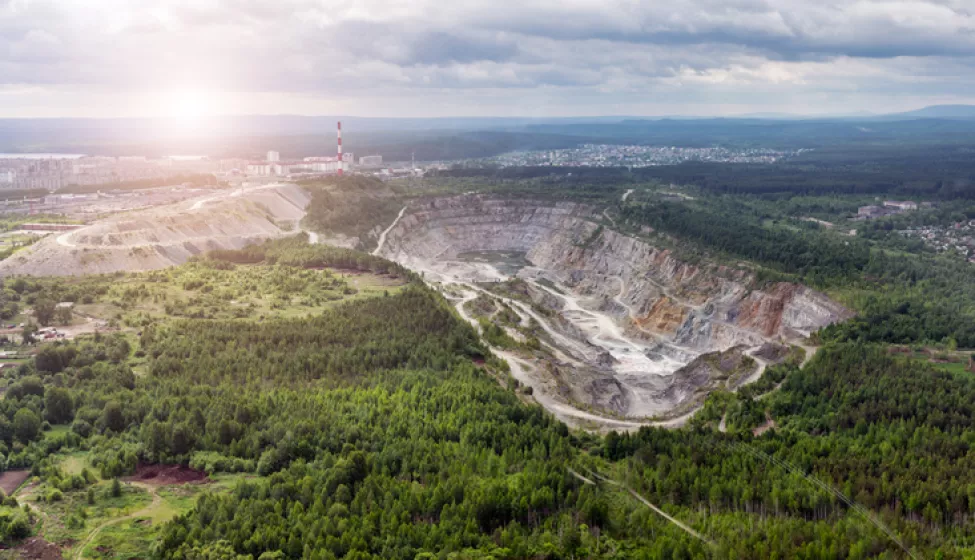April 9, 2020
Rare earth elements (REEs), the fifteen lanthanide elements plus scandium and yttrium, are the foundation on which modern technology is built. REEs currently play a vital role in consumer electronics, green technologies, medical tools, and military hardware. From smart phones and wind turbines to implants and jet fighters, some of today's highest-tech products and services rely on processed REEs for miniaturization, performance, and efficiency. In 2018, the U.S. government classified several REEs as "critical mineral commodities," a designation reserved for non-fuel minerals that are essential to product manufacturing and U.S. economic/national security, yet vulnerable to supply chain disruption.
As demand for modern technology grows, tech manufacturers and sustainable energy producers should partner with the scientific community to diversify the REE supply chain. Today, 70% of global annual REE production comes from China, where just six state-owned companies control the price and availability of rare earth mining, processing, and exporting. By identifying viable REE resources in usable amounts in multiple locations worldwide, manufacturers across the globe can help protect their ability to contribute to a sustainable high-tech future without interruption.
Current REE Supply Chain Limitations
Until the early 1990s, the U.S. was the world's largest supplier of REEs. Today, the U.S., Australia, Myanmar, Russia, and India collectively share 30% of REE annual production. China controls the remaining 70% due in large part to a two-decade investment in mining REE reserves in its southern provinces. For much of that time, China's REE mining industry was largely unregulated.
Chinese officials began cracking down on illegal mining in 2011 and tightened environmental controls for licensed mines in 2017 and 2018. Since that time, many facilities have remained unused in part due to an inability to meet newer regulatory requirements. In recent years, earth separation facilities in southern China have consistently reported capacity utilization below 40%. Those facilities remaining in operation are managed by state-owned companies that control the price and availability of REE resources to manufacturers across the globe.
In early February 2020, Chinese officials understandably halted transportation to and production at many rare earth processing facilities in the southern Jiangxi and Guangdong provinces to help curb the spread of the coronavirus (COVID-19). While officials reported restarting production in late February 2020, Apple has stated that its manufacturing of products including iPhones is progressing slower than anticipated, leading to an iPhone shortage worldwide.
This disruption will be seen across industries, partially due to labor shortages but also due to supply chain disruptions across China, including those used to produce and transport REEs for manufacturing in high-tech goods. Other technology manufacturers across the globe may presumably follow suit. Rare earth exports from China fell dramatically in the first two months of 2020 due to disruptions in productions and shipments worldwide.
What Is Needed to Identify Viable, Sustainable REE Sources
The largest challenge associated with REE mining is not the identification of new sources. Contrary to its naming convention, this group of seventeen elements is relatively abundant in the Earth's crust. Known REE locations exist in the U.S., and scientists believe that large amounts of REEs are still to be discovered across North America and Australia. However, these sites are expected to be more financially prohibitive than their Chinese counterparts due to the relative stringency of their governments' environmental regulations.
According to the U.S. Environmental Protection Agency, the traditional REE mining process requires a cocktail of chemical compounds and produces a tremendous amount of solid waste. This is due in part to the intermingling of REEs with other minerals in different concentrations in the ground. Earth separation facilities must perform complex processes of element isolation, solvent extraction, and purification to turn a raw ore into an oxide, phosphor, metal, alloy, or magnet that can take advantage of the REE's magnetic, luminescent, or electrochemical properties. The rarity of these elements stems from the labor involved in separating them from rock, a process that can be difficult to perform in an environmentally friendly manner.
The most important question is not where to mine for REE resources but rather how to do so both cost effectively and in an environmentally sustainable manner. Solving this problem will require expertise to identify viable REE resources in usable amounts worldwide and the development and testing of new technology to produce these resources with minimal environmental impact. By investing in these activities today, the scientific and technology communities can help ensure the availability of REE-reliant products and services for multiple generations to come.
How Can Exponent Help
Exponent's multidisciplinary team of geologists, materials scientists, mechanical engineers, and environmental experts can assess the viability of REE bodies and contribute to environmentally sound extraction and production across the globe.

